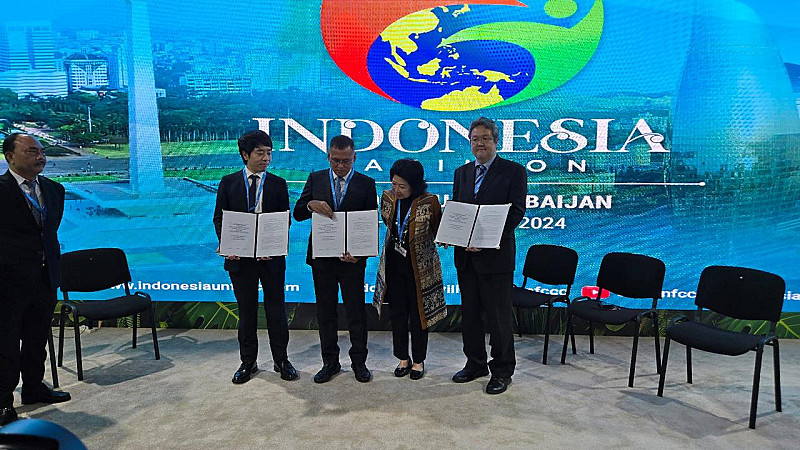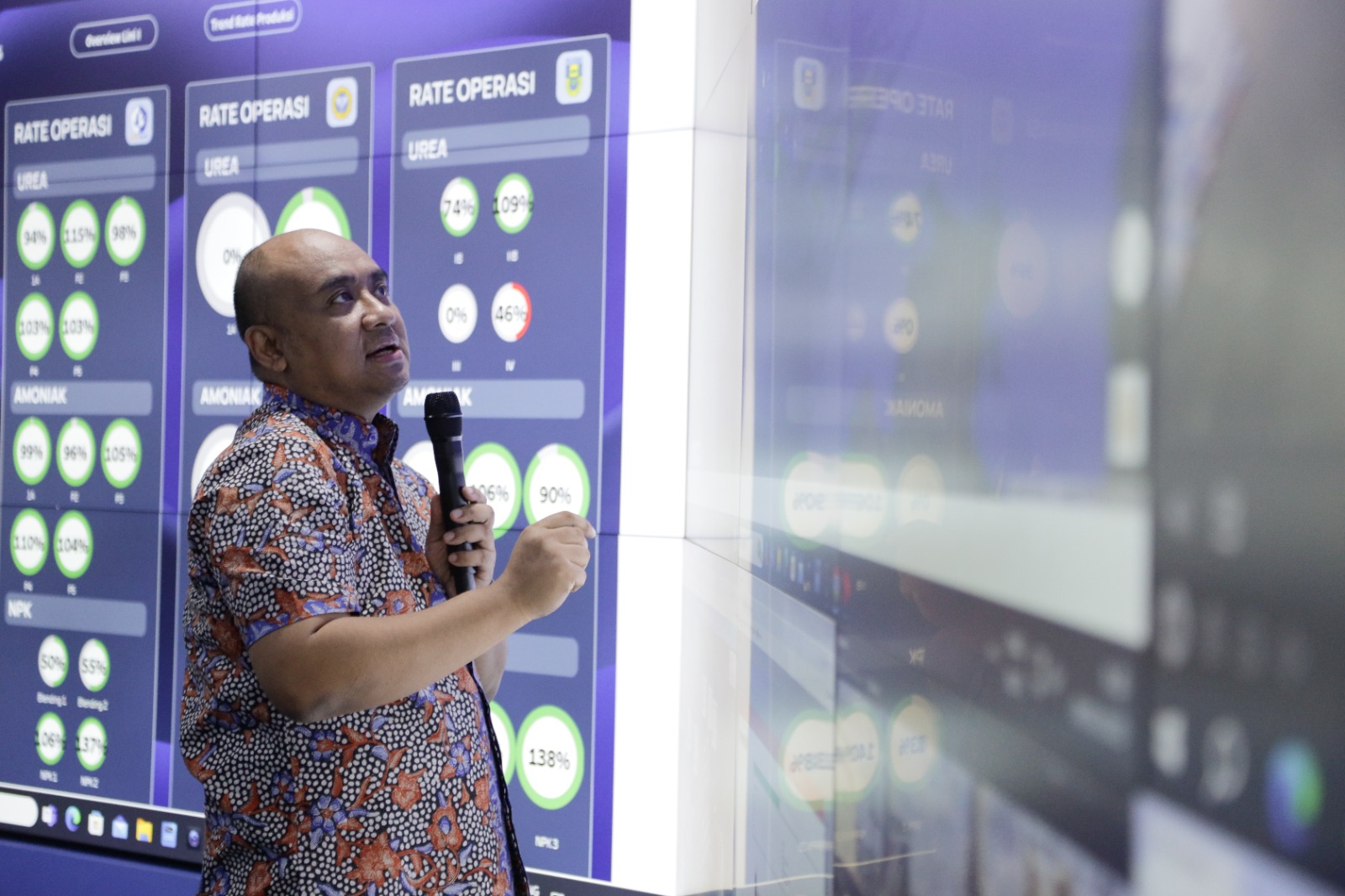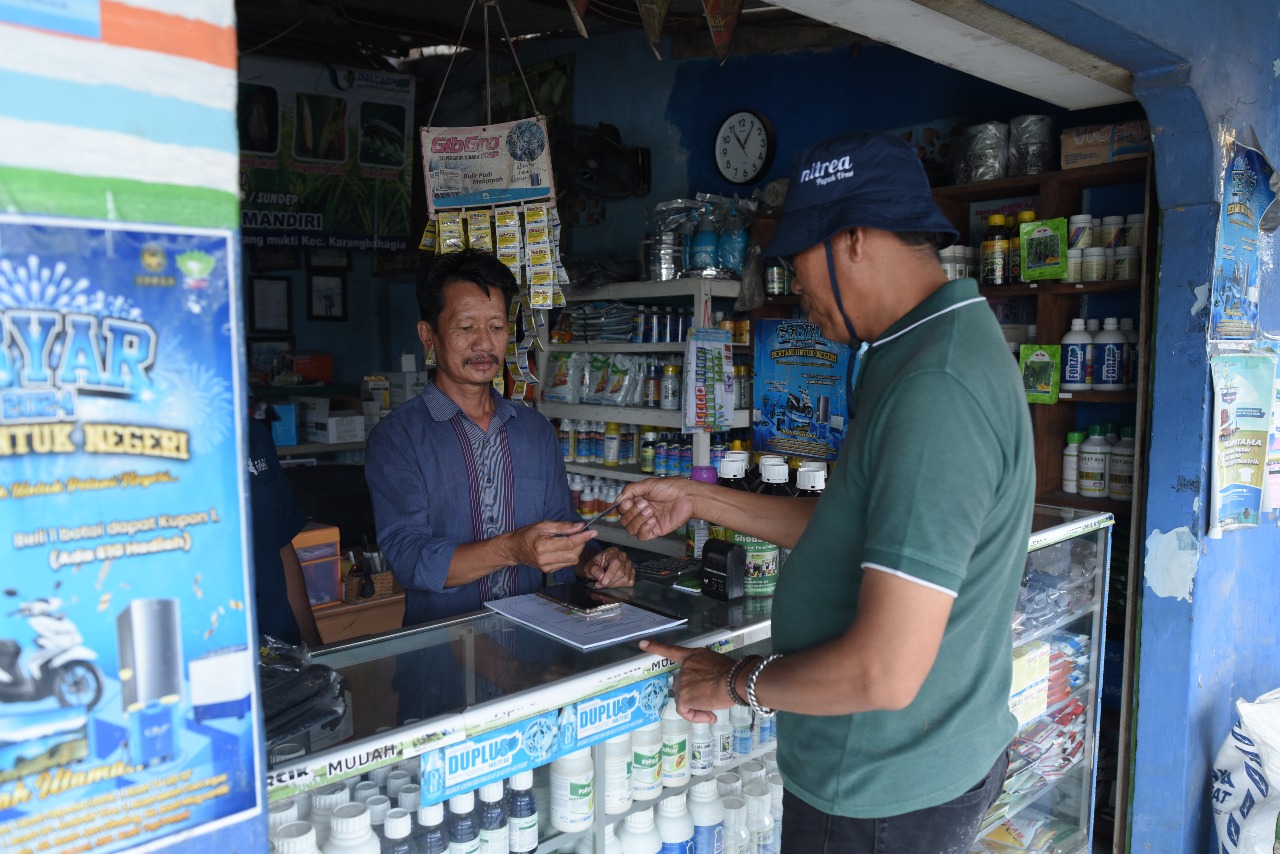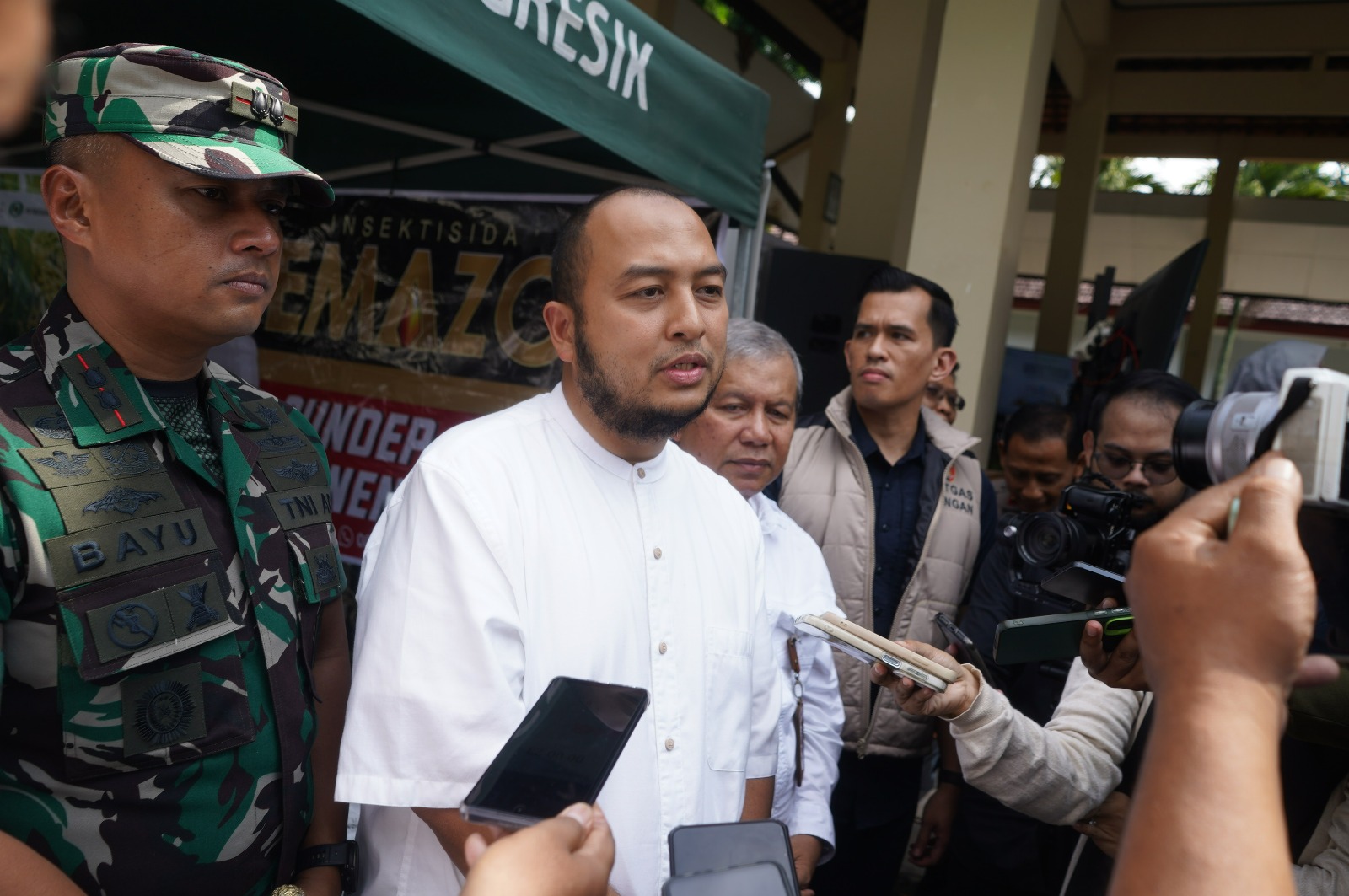Pupuk Indonesia di COP 29: Proyek Hybrid Green Ammonia Pertama Dunia Akan Dibangun di Indonesia

Baku, 12 November 2024 – Berpartisipasi sebagai anggota delegasi Indonesia di Conference of the Parties (COP) UN Climate Change Conference ke-29 di Azerbaijan, PT Pupuk Indonesia (Persero) menegaskan posisi Indonesia dalam transisi energi hijau global melalui Proyek GAIA (Green Ammonia Initiative from Aceh) yang akan menjadi fasilitas hybrid green ammonia pertama di dunia.
Proyek ini memanfaatkan pabrik amonia milik anak perusahaan Pupuk Indonesia, yakni Pupuk Iskandar Muda (PIM) di Aceh. Selain memproduksi amonia dari bahan baku gas alam, pabrik ini juga akan menghasilkan amonia hijau dari hidrogen yang dihasilkan lewat proses elektrolisis air.
Direktur Utama Pupuk Indonesia, Rahmad Pribadi (ketiga dari kanan pada gambar), mengungkapkan, “Proyek GAIA bukan hanya upaya meningkatkan efisiensi penggunaan aset yang ada, namun juga inovasi kami dalam menciptakan solusi berkelanjutan yang berdampak positif bagi lingkungan, perekonomian, bahkan mendukung ketahanan pangan dan energi.”
Apabila amonia hijau ini dapat diproduksi secara konsisten, lanjut Rahmad, Indonesia berpotensi menjadikannya sebagai komoditas strategis yang memiliki nilai ekonomis tinggi seiring meningkatnya permintaan global. Selain tentunya mendukung pencapaian target Net Zero Emission Indonesia pada 2060.
Untuk merealisasikannya, Pupuk Indonesia bekerja sama dengan dua perusahaan asal Jepang, Toyo Engineering Corporation dan ITOCHU Corporation, dalam sebuah joint venture yang mendukung rantai nilai produksi dan distribusi amonia hijau. Kerja sama ini tidak hanya mempercepat implementasi teknologi rendah karbon di Indonesia, tetapi juga mencerminkan komitmen Pupuk Indonesia untuk memerangi perubahan iklim melalui kolaborasi internasional. Dengan menggabungkan keahlian dari berbagai negara, Project GAIA diharapkan dapat menjadi solusi energi bersih yang berdampak positif secara global dan memperkuat posisi Indonesia dalam peta transisi energi hijau dunia.
Dalam ekosistem Proyek GAIA ini, listrik untuk menghasilkan hidrogen hijau berasal dari sumber energi terbarukan yang dipasok PLN, teknologi rancang bangun atau EPC dari Toyo, serta dukungan rantai pasok bahan bakar kapal (marine bunkering) dari ITOCHU.
Proyek GAIA juga ditujukan untuk mempercepat hilirisasi industri kimia di Indonesia, dengan pendekatan yang mendukung keberlanjutan melalui energi terbarukan. Proyek ini akan menjadikan Indonesia sebagai pionir dalam memproduksi amonia hijau hybrid, yang tidak hanya bermanfaat untuk kebutuhan domestik, tetapi juga sebagai komoditas bernilai tinggi untuk ekspor. Di masa depan, model bisnis ini dapat direplikasi di fasilitas-fasilitas produksi amonia lain di Indonesia, bahkan internasional, mendukung hilirisasi berkelanjutan dengan memanfaatkan energi hijau.
Manfaat Ekonomi dan Lingkungan dari Project GAIA
Proyek GAIA diprediksi dapat berkontribusi positif bagi perekonomian Indonesia. Selain mendatangkan investasi, proyek ini dipastikan juga dapat menciptakan lapangan kerja baru di sektor energi hijau. Terlebih lagi, secara jangka panjang Proyek GAIA dapat diperluas ke fasilitas produksi amonia lain di Indonesia bahkan mancanegara.
Perluasan model bisnis Proyek GAIA pada fasilitas produksi amonia Pupuk Indonesia Group ke depannya diharapkan dapat menjamin pasokan bahan baku pupuk ramah lingkungan. Hal ini esensial mengingat pupuk berkontribusi dalam meningkatkan produktivitas pertanian, sehingga mendukung pemenuhan kebutuhan pangan dalam negeri hingga regional.
Kawasan Ekonomi Khusus (KEK) Arun, Lhokseumawe, yang menjadi lokasi Project GAIA, menyediakan infrastruktur yang mendukung investasi hijau dan mempercepat realisasi potensi ekonomi dari proyek ini.
Dengan keahlian dan pengalaman lebih dari 50 tahun dalam memproduksi, menyimpan, dan mendistribusikan amonia, Pupuk Indonesia berada pada posisi strategis untuk membawa Indonesia menjadi pemain utama amonia hijau di tingkat global. Karena selain untuk pupuk dan pangan, pengembangan amonia hijau juga dapat mendukung sektor maritim global, yang diproyeksikan akan mengadopsi amonia hijau sebagai bahan bakar ramah lingkungan pada 2050.
“Melalui Project GAIA, Pupuk Indonesia berada di garis terdepan inovasi teknologi rendah karbon. Inisiatif ini tak hanya menjadi milestone bagi dekarbonisasi industri pupuk nasional, tetapi juga berpotensi menjadi model bagi negara lain yang ingin mengembangkan green ammonia,” tutup Rahmad.







